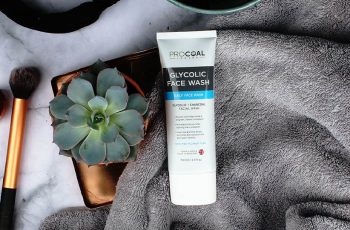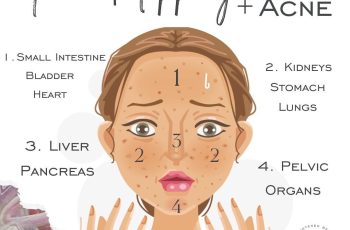
What Does Galactose Do in Skin Care and What are its Benefits?
We have previously touched on PHAs and how they have stormed their way onto the beauty scene in recent years. Today we are taking some time to learn more about one particular ingredient known as galactose. What is it exactly? What results you can expect to see when introducing it into your skincare routine, and whether it will truly benefit you and your skin type. So, let’s not waste any more time and dive right into this clever Polyhydroxy acid and see what it can do for our skin.
What is galactose?
Galactose is naturally occurring in the body as a sugar transformed in the liver to provide energy for the body. Although primarily galactose is used within dietary intake there are many benefits to using a skincare product containing the ingredient in the formulation. There have been a number of studies researching the effectiveness of galactose and how it can affect the skin, with it containing a number of antioxidant and prebiotic properties. It is these qualities that makes this compound desirable for skincare products that provide exfoliating and nourishing benefits.
Galactose is part of the PHA family, a collection of chemical exfoliants that are new generation of the very popular AHAs and BHAs. Unlike their more potent cousins however, PHAs have a gentle approach to exfoliating the skin ensuring it safe enough for all skin types to use. Even those who suffer with sensitive skin and other skin concerns such as eczema, rosacea and dermatitis.
What are the skincare benefits of galactose?
When applying galactose you can expect it to help with the overall complexion of the skin, with a number of particular concerns that can be addressed in a slightly different way compared to using Alpha hydroxy acids (AHA) and beta hydroxy acids (BHA) mainly due to the fact that PHAs, such as galactose has the ability to hydrate the skin when applied topically. This then leads to the skin’s natural protective barrier to function with the correct levels of oil and water after having moisture locked into the skin. Signs of ageing, such as fine lines and wrinkles as well as dry patches of skin and dead skin cell build-up are all targeted.
Here are the main benefits of galactose;
Galactose is a chemical exfoliant meaning it can slough away dead skin cell that can build-up on the outer layer of the skin causing the complexion to look dull with dry patches and some suffering from frequent breakouts and other blemishes.
Galactose can help reduce the appearance of dark spots and hyperpigmentation, unlike other chemical acids, such as AHAs there is no increase to sun exposure meaning you will see results quicker and dark spots notably less visible.
Galactose contains antioxidant properties when ingested and applied topically to the skin, meaning it is able to counteract the effects of overexposure to harmful free radicals, such as pollution, climate, central heating, UV exposure and other environmental skin stresses.
Galactose has the ability to remain gentle on the skin as well as increase the effectiveness of how other skin ingredients to penetrate the skin therefore making galactose a high performing benefit to everyone’s skincare routine with all products able to perform at the highest level.
Galactose is gentle enough for all skin types to use, even those with sensitive skin with frequent rosacea and eczema flare-ups. You will find any irritation, dryness and redness are not a concern compared to the more potent acids, such as salicylic acid and glycolic acid.
Galactose is able to be used alongside other AHA and BHA ingredients (if your skin can tolerant it) meaning you can achieve more notable results in a quicker amount of time with a well establish and effect blend of ingredients in your everyday regime.
Galactose hydrating properties allows it to work well when paired with skin ingredients such as hyaluronic acid, glycerin, ceramides and peptides. The moisture locking benefits will be amplified if you choose to mix these ingredient together leaving you with a nourished finish to the complexion.
There you have some of the main benefits of using galactose in your daily routine, although I must stress that you should also ensure your skin is happy with you applying the ingredient on your skin. Perform a patch test by applying some on your forearm and leaving it for 24 hours to see it doesn’t irritate the skin. If you happen to have any concerns with using a new PHA then you must always consult your GP or medical professional for more advice.
Which skin types can use galactose?
I have already briefly touched on which skin types can use galactose and other PHAs, and that is everyone! Yes really, everyone. As long as you perform a patch test, as previously described and there had been no signs of irritation, then you are good to go.
The molecular size of galactose is very large, this means it is unable to penetrate into the lower layers of the skin and cause some irritation, unlike the potent salicylic acid, which is known for its ability to reach the lower layers of the skin.
How do you use galactose in your daily skincare routine?
Polyhydroxy acids, such as galactose, are able to be formulated into all manner of skincare products, from cleansers, masks, moisturisers and serums. In most recent years many skincare users have made the change of replacing original toners formulated with scented floral water, with a chemical exfoliant containing facial acids from the extensive hydroxy family. By making the swap to an exfoliating toner will not only help you keep on top of the overall complexion with even texture and tone, but will allow the following steps of your routine to absorb quickly and more effectively.
Though I have stressed how gentle galactose and other PHAs are on the skin, there is only so much it can tolerate. Using the galactose enriched product should be used as instructed on the packaging, this is not only important to ensure you are using the product correctly but will avoid over-using it resulting in the skin becoming dry, uncomfortable and irritated. If you are wanting to choose the most potent product containing galactose, then opting for a serum or moisturiser will provide you with the best results as they generally stay on the skin for a longer amount of time.
What can you not mix with galactose?
As easy it is to introduce a galactose enriched product in your routine there are a couple of precautions to take when using it on a daily basis. This is mainly linked to other products containing very popular ingredients, such as vitamin C and vitamin A (such as retinoids) Due to vitamin C being notoriously unstable it is best to avoid applying it at the same time as galactose. This doesn’t however mean you cannot use both these ingredients in your routine. For example, you can use vitamin C serum during your morning routine and a galactose toner in the evening. This will result in your skin fully benefiting from both of these skincare ingredients without causing the skin to react in a flare-up or irritation.
The same can be suggested when using retinol as overuse can result in the skin becoming over-sensitive and so alternating when you apply retinol and galactose will keep the skin balanced, healthy and happy.
If you are wanting to know more about Polyhydroxy acids and how they benefit the skin, you can check out our blog post. Alternately, if you are wanting to know more about what the difference is between AHAs and BHAs, you can read more about their benefits too.


